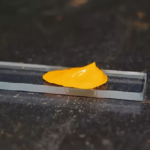The placement of the reinforcement according to the sections of the elements and the gaps between the rods are shown in the rice. 60.
With limited sections, it is permissible, in the form of an exception, to place the rods in pairs (without a gap) or at a distance between the pair of rods less required – in rice. 60. Such a pair of rods when assigning a distance between pairs, as well as when determining the length of the anchor zone, is considered as a conditional rod with a diameter DN = VD \ + DL – C \, where DX and D2 are diameters of the drawn rods; SC – distance in the light between these rods.
As a rule, the dimensions of the cross section of the elements in the stretched area depend on the gaps of the rods or wire elements, as well as on the dimensions of stretch devices. Rice. 60, L illustrates the dependence of the gaps between the reinforcement and the size of the cross section of the stretched zone on the type of reinforcement (rods, wire beams, seven -handle rope or wire package). As can be seen from comparison of sections / – /y, reinforcement with the rods can significantly reduce the sizes of sections or increase the gaps between them, and reinforcement with seven -handed or multi -digit ropes to reduce steel consumption. When comparing reinforcement with rods and ropes, it should be taken into account the need to do with the shafts of rods in long elements, in contrast to their reinforcement with ropes, the length of which is not limited.
When reinforcing beams with knitted frames, the number of working rods should be reduced by increasing their diameter. I scope (bent) reinforcement is obtained by bending of the rods placed in the span, with the exception of those that are passed from the support to the support by straight.
For the working reinforcement of the beams, rods with a diameter of 12 to 28 mm are used (the rods of a larger diameter is difficult to bend). Reinforcement with a diameter of more than 40 mm is allowed to be used only in welded frames.
The span of the beams reinforce at least three working rods, but in frequent floors and ribs of the prefabricated flooring, they put two rods or even one.
From the support to the support along the bottom of the secondary beams, at least two straight rods are passed and from two to four – in the main beams. Three or four rods are allowed straight in those cases when they put four -filled clamps, which, in turn, depends on the width of the beam (b > 350 mm) and the results of its calculation by pop power. These rods are located in the inner angles of the exearge of the clamps (rice. 108,)) and do not bend; They record the position of the clamps and give the reinforcing cage the necessary stiffness for the duration of concreting. All other working rods reinforcing the flight are usually bent at the supports. 1 reinforcement according to the transverse span and supporting sections of the beams, as a rule, is placed in no more than two rows, not a toakus-





